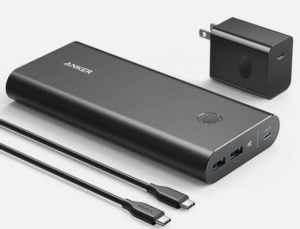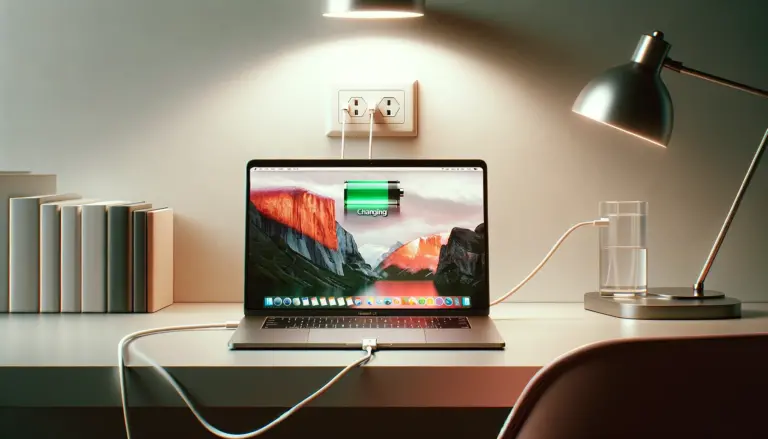Finding yourself with a MacBook Pro and no charger can be more than just an inconvenience; it can disrupt your workflow and leave you searching for solutions. This article dives into the essentials of how to keep your MacBook Pro powered up, even when the original charger is out of reach. We explore a range of innovative and practical methods for charging your device, ensuring you’re never left powerless. From alternative charging solutions to essential safety precautions, we cover everything you need to know, including a handy FAQ section for quick answers to common queries.
Table of Contents
Macbook Alternative Charging Methods
USB-C Power Banks

In the quest to charge a MacBook Pro without the standard charger, USB-C power banks emerge as a frontrunner. These portable power sources are not only convenient but also capable of delivering the necessary power to keep your MacBook Pro running. Here’s how to select and use one effectively:
Criteria for Choosing the Right Power Bank
- Capacity: Look for a power bank with a capacity of at least 20,000mAh to ensure it can fully charge your MacBook Pro at least once.
- Power Output: The output power should be compatible with your MacBook Pro, ideally around 60W to 100W for efficient charging.
- Portability: Consider the size and weight, especially if you plan to carry it regularly.
Our Pick: Anker PowerCore+ 26800 mAh 60W PD Charger (Amazon.com)
Step-by-Step Directions
- Connect the USB-C cable to your MacBook Pro.
- Attach the other end of the cable to the power bank.
- Power on the power bank (if required) to start charging.
- Monitor the charging process to ensure compatibility and efficiency.
Using Another Laptop
Another innovative method involves using another laptop to charge your MacBook Pro. This requires a compatible USB-C connection and understanding the process and compatibility considerations.
Process for Transferring Charge
- Connect a USB-C cable between the two laptops.
- Ensure the donor laptop is plugged into power or has enough battery to share.
- Initiate charging by enabling any required settings on the donor laptop, if necessary.
Compatibility and Considerations
- Compatibility: Both laptops must support power delivery over USB-C for this method to work.
- Power Efficiency: Be aware that this method may not be as efficient as direct charging, as power loss can occur during the transfer.
- Battery Impact: Consider the battery impact on the donor laptop, as it will deplete faster while charging another device.
By exploring these alternative charging methods, you can ensure your MacBook Pro remains charged and ready for use, even in the absence of its original charger. Whether opting for the convenience of a USB-C power bank or leveraging another laptop, staying powered up is achievable with the right approach and tools.
Safety Precautions
Understanding Voltage and Power Requirements
Charging your MacBook Pro safely without its original charger requires an understanding of the device’s voltage and power requirements. Below is a table that outlines these needs for various MacBook Pro models, ensuring you match your alternative charging method to these specifications to prevent damage.
| MacBook Pro Model | Power Requirement (W) | Voltage Requirement (V) |
|---|---|---|
| 13-inch (2020) | 61W | 20.3V |
| 15-inch (2019) | 87W | 20.2V |
| 16-inch (2019) | 96W | 20.5V |
Avoiding Damage to Your MacBook
To ensure the longevity of your MacBook Pro while charging it without the original charger, consider the following tips:
- Use Compatible Chargers Only: Always use charging devices that meet Apple’s power standards for your specific MacBook Pro model.
- Monitor Charging Process: Keep an eye on your MacBook during charging. If it becomes excessively hot, disconnect the charging source immediately.
- Quality Cables: Utilize high-quality, durable USB-C cables that support the necessary power delivery for your MacBook Pro.
Innovative Charging Solutions
Solar Chargers
Harnessing the power of the sun, solar chargers offer an eco-friendly way to charge your MacBook Pro, especially useful when you’re on the move or away from traditional power sources.
How to Use Solar Power for Charging
- Choose a solar charger with a USB-C output and sufficient wattage for your MacBook Pro.
- Position the solar panels under direct sunlight for optimal energy absorption.
- Connect your MacBook Pro to the solar charger using a USB-C cable.
- Monitor the charging process, ensuring the charger remains in sunlight.
Best Solar Chargers for MacBook Pro
- Look for solar chargers that offer at least 30W of power output, though higher is preferable for faster charging times. Models with integrated batteries can store energy, allowing for charging even when the sun isn’t out. Our favorite budget solar charger is this 4 panel quick charge unit.
Car Chargers
For those constantly on the road, car chargers present a convenient solution to keep your MacBook Pro charged.
Guide to Choosing and Using a Car Charger for MacBook Pro
- Selecting a Car Charger: Ensure the charger has a USB-C port with power delivery that matches or exceeds your MacBook Pro’s requirements.
- Using the Car Charger: Plug the charger into your vehicle’s cigarette lighter socket, connect your MacBook Pro via a USB-C cable, and begin charging.
- Safety Tips: Avoid charging your MacBook Pro in a hot car to prevent overheating. Also, ensure your car’s electrical system can handle the load without affecting the vehicle’s performance.
- Our Favorite is this Anker USB-C 67W charger that supports the Macbook.
By adopting these innovative charging solutions and adhering to safety precautions, you can keep your MacBook Pro powered up in various situations, ensuring you’re always ready for whatever your day may bring.

DIY Charging Solutions
Creating a DIY Charger
Crafting a DIY charger for your MacBook Pro can be a rewarding project but comes with significant safety considerations. Follow these guidelines:
Instructions:
- Gather a USB-C PD (Power Delivery) module capable of delivering the correct wattage for your MacBook Pro.
- Connect the PD module to a suitable power source, such as a battery pack or solar panel, ensuring it meets the voltage and current requirements.
- Use quality USB-C cables to connect your DIY charger to your MacBook Pro.
Safety Warnings:
- Electrical Safety: Ensure all components are correctly insulated to prevent short circuits.
- Compatibility: Verify that the output matches your MacBook Pro’s charging specifications.
- Testing: Initially, monitor the charging process closely to detect any issues early.
Adapting Existing Chargers
Modifying existing chargers to power your MacBook Pro involves understanding both the charger’s output and your MacBook’s requirements.
How to Modify:
- Identify a charger with a USB-C output and sufficient wattage.
- Use a USB-C PD trigger chip to match the output to your MacBook’s charging protocol.
- Securely connect the modified output to your MacBook using a high-quality USB-C cable.
FAQs
Can I use any USB-C cable to charge my MacBook Pro?
It’s crucial to use a USB-C cable that supports USB Power Delivery and has the appropriate wattage capacity for your MacBook Pro.
Is it safe to charge my MacBook Pro with a power bank?
Yes, as long as the power bank meets the power requirements of your MacBook Pro and supports USB-C Power Delivery.
How do I know if a solar charger is compatible with my MacBook Pro?
Check that the solar charger can provide a USB-C output with enough wattage to meet or exceed your MacBook’s charging needs.
What should I do if my MacBook Pro doesn’t charge using an alternative method?
Ensure the charging method is compatible with your MacBook Pro’s requirements. If issues persist, consult with a professional or Apple support.
Can charging my MacBook Pro without the official charger void the warranty?
Using non-Apple certified chargers may risk voiding your warranty, especially if damage occurs as a result of using such chargers.
Exploring alternative charging methods for your MacBook Pro ensures you’re prepared, regardless of your situation. From USB-C power banks to solar panels, and even DIY solutions, there’s a wealth of options to keep your device powered. Remember, safety and compatibility are paramount to protect your MacBook Pro and its warranty. We encourage you to explore these solutions and choose the one that best fits your needs, keeping your MacBook Pro charged and ready for any challenge.

